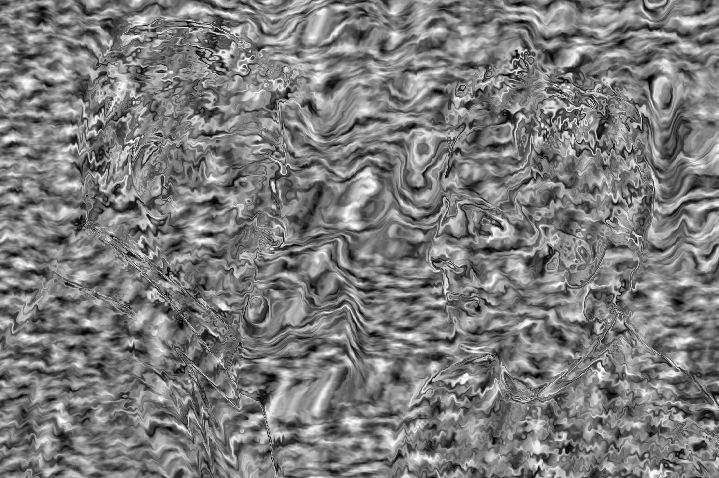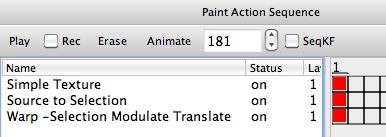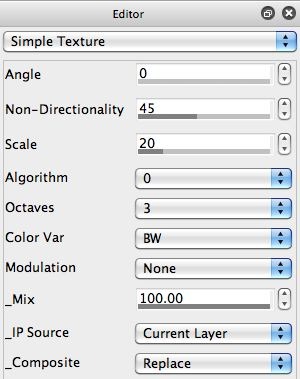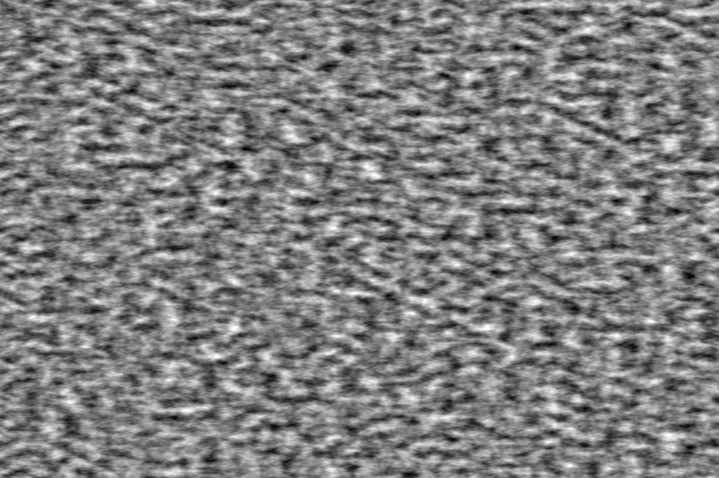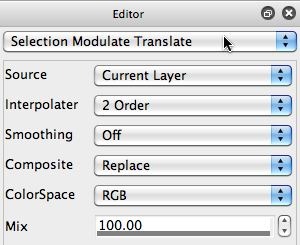This post continues a series we started yesterday on adding representational features from a source image into a very abstract canvas. This post starts with a flat random noise texture field and shows how you can use a modulated interactive warp to pull source features out of a totally random noise canvas.
The paint action sequence (PASeq) below was used to create the above effect.
The first Simple Texture action step (shown in the 2nd gallery image) generates a turbulence noise texture field. Note that there’s nothing associated with the source image at all in this noise field.
I then used the Canvas : Selection : Set to : Source menu command to set the selection buffer to the source image. I did this because I wanted to use the source image to modulate an interactive warp in the last PASeq action step. I used the Selection Modulate Translate interactive warp option.
Note how using an interactive warp that is modulated by the source image is able to pull source features out of a noise texture. So you could use this particular trick in all kinds of different abstract image generation techniques to pull a little bit of the source features back into an abstracted canvas. Working with the interactive warp Smoothing control provides a way to smooth out noise in the source modulated warp. Alternatively, you could filter the source image with an image operation effect and then load the smoothed source image into the selection buffer prior to the warp.
In general, I think a little of this particular trick goes a long way, so I tend to use a low Mix setting and a small amount of warp to use it subtly. However, I know of a few artists who use really extreme warp amounts to build modulated abstract images that work as stand alone abstraction effects.

